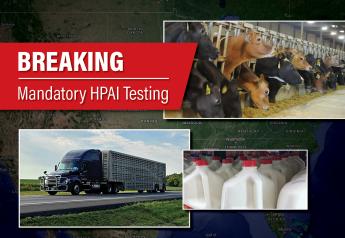Derrell Peel: Beef Exports Struggling And Imports Steady In 2019

Beef exports were down 9.0 percent in October compared to last year, contributing to a 4.2 percent year over year decrease in beef exports for the first ten months of 2019. This follows three years of double-digit year over year growth in total beef exports in 2016, 2017 and 2018. Beef exports are down for the year to date in four of the top five U.S. beef export markets. Total beef imports were up 2.7 percent year over year in October and are up 0.7 percent for the year to date.
Beef exports to Japan, the largest U.S. beef export destination, were down 23.5 percent in October and are down 10.6 percent year over year so far in 2019. The U.S. has been at a significant tariff disadvantage in Japan after withdrawing from the TPP agreement. The impacts of the CP-TPP, which took effect this year without the U.S. have become increasingly apparent in recent months as beef exports to Japan have decreased year over year for the last eight months. The bilateral trade deal between the U.S. and Japan, recently ratified in Japan, is scheduled to begin in 2020 and will hopefully, erase most of the tariff disadvantage the U.S. currently faces and will stop the erosion of beef market share in Japan. Japan represents 26.7 percent of U.S. beef exports for the year to date in 2019.
South Korea is the second largest beef exports market and is up 7.4 percent thus far in 2019, but was down 1.2 percent in October compared to one year ago. South Korea accounts for 22.8 percent of total U.S. beef exports thus far in 2019.
Mexico is the third largest beef export market and also the third largest source of U.S. beef imports. Beef exports to Mexico were down 11.5 percent in October and are down 3.5 percent for the year to date. Mexico accounts for 14.3 percent of beef exports thus far in 2019. Beef imports from Mexico were up 19.6 percent year over year in October and are up 14.1 percent for the year to date in 2019. Mexico accounts for 18.7 percent of U.S. beef imports so far this year.
Canada is the fourth largest U.S. beef export market and is currently the largest beef import market. Beef exports to Canada were down 4.5 percent in October compared to last year and are down 11.3 percent thus far in 2019. Canada represents 8.8 percent of beef exports thus far in 2019. Beef imports from Canada were up 8.9 percent in October and are up 8.0 percent year over year for the first ten months of the year. Beef imports from Canada are 27.7 percent of total beef imports for the year to date.
Hong Kong is the fifth largest beef export market, down 11.1 percent year over year in October and is down 27.5 percent thus far in 2019. Hong Kong represents 6.9 percent of total beef exports in 2019. Close behind Hong Kong is Taiwan where beef exports were down 8.7 percent in October but up 7.8 percent for the year to date. Taiwan is the sixth largest beef export market for U.S. beef and accounts for 6.5 percent of year to date exports. Beef exports to the top six markets represent 86.1 percent of total beef exports through October in 2019.
Australia is the second largest beef import source for the U.S. with imports down 7.1 percent in October and up 4.1 percent for the year to date. Australia accounts for 23.1 percent to beef imports thus far in 2019. New Zealand is the fourth largest beef import market for the U.S. with October imports down 37.9 percent and year to date imports down 28.8 percent. New Zealand represents 14.5 percent of total beef imports. The top four beef import sources account for 84 percent of total imports with Nicaragua adding another 5.5 percent and Brazil adding 5.2 percent.
Related stories:
Derrell Peel: A Peak In Feedlot Inventories?







